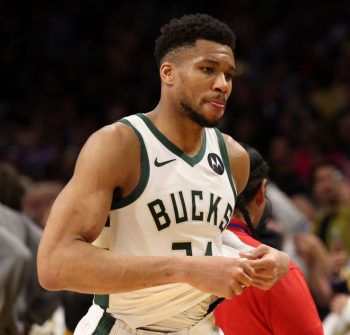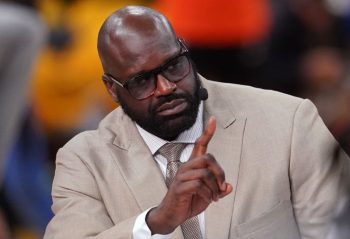NBA
The Flimsiness of Narratives

To begin this segment on narratives, let’s travel back to the 2016 NBA Draft. Remember what the narrative was for that particular class around that time?
It was labeled as top-heavy. Very top-heavy. It was supposed to be a two-man draft. Only two prospects in that draft were projected to be potentially special talents in the NBA: Ben Simmons and Brandon Ingram. While the prospects below them were labeled as more of a crapshoot, Simmons and Ingram were believed to be a cut above the rest.
Simmons was deemed a future superstar the second he hit the national stage in Australia, while Ingram garnered attention during an impressive freshman campaign at Duke. Needless to say: Whichever franchise got those two were getting a marquee building block.
Almost four years later, the narrative on the draft has definitely changed.
Let’s get back to Simmons and Ingram. Because these two were selected nos. 1 and 2 in the same draft, they will never be able to avoid comparisons to one another. Even if their skillsets have some very obvious differences, as far as overall talent goes, there are some striking similarities between the two.
Besides their same class designation and a relatively-similar height, both are oversized for the positions they play. However, those physical gifts mean that they not only outside of their regular position but instead thrive in those spots as well. Additionally, and unsurprisingly, it makes both of them two of the most versatile and unique young talents in the league.
Comparing their careers as a whole, Simmons gets the edge for now. The Aussie hit the ground running from the first moment he entered the league. Simmons has had more success both as a player and with the teams he’s played on. Today, he’s even on a team that currently has a better record than Ingram’s — by a fair margin too.
So why is it that their career trajectories appear to be going in opposite directions? At the present time, Ingram is looked at as a promising starlet whose efforts this season should be enough to, at the very least, make a case for the All-Star game. Simmons, on the other hand, seems to be everyone’s favorite scapegoat, despite making a solid case to make the All-Star Game, too.
One simple word: Progress.
With a fresh start on a new team and a clean slate of health — fingers crossed that those blood clots were a one-time thing — Brandon Ingram is living up to the billing of the second overall pick. He’s using his slender physique to abuse mismatches, his jumper is more on-point and his play-making abilities are now on full display.
Until Zion Williamson makes his debut on Wednesday, he has been the indisputable face of the suddenly-scary New Orleans Pelicans. The player that we see from Ingram today did show himself at times when he was in Los Angeles — but only in small doses. His injury issues were not on the Lakers, but with LeBron James on the team, he was thrust into a role that he wasn’t ready for. There’s always a light at the end of the tunnel, and for Ingram, it looks like he’s just about reached it.
As for Simmons, well, he has made progress from a technical standpoint. This season, he’s been able to use his physical advantages to become a much better defender. A 6-foot-10 player with his agility and great vision has all the tools to be an elite defender. Simmons was never a slouch on that end, but he’s elevated his defense well enough to get him All-NBA consideration in that department.
But, somehow, that’s also where the progress stops. Despite summer workout videos suggesting to the contrary, Simmons’ jumper is still a non-factor. Because of that, he faces more questions about his ceiling both as a player and as a pairing with Joel Embiid. Offensively, Simmons is still basically the same player he was when he first entered the league. There’s still so much to like about what he does on that end — and yet the complete lack of spacing leaves so much to be desired.
So, Simmons has improved as a player since coming into the league. He just hasn’t made the improvements that we have wanted to see from him.
The same can’t be said for Ingram
The point is: It doesn’t take all that long for a narrative to change. In this case, to many, Ingram is now the can’t-miss-blossoming-star while Simmons has stagnated — even if only just a little.
Simmons had the future-superstar label slapped on him since he entered the league — with one simple caveated-asterisk, his jumper. This was a well-dissected flaw as a prospect and, with no noticeable progress in that category, critics are on his case now more than ever.
Meanwhile, Ingram’s critics have all but disappeared. His potential has always been there, but his injury history made his future murky. For the time being, he has potential to be a perennial All-Star — most in part thanks to his clean bill of health — and he’s producing better than ever.
Still, there’s also the atmosphere that both of these players are in.
Since the 76ers don’t revolve around him primarily, nor put the best shooters around him, Simmons’ Achilles heel nearly overshadows all the beauty of his game. At this point, it’s gotten fair to wonder if Philadelphia is the right situation for him as a developing player.
That said, Ingram certainly has found the right situation for him.
Simmons was supposed to be a key cog on a title contender; Ingram was supposed to be the new face of a rebuild. There’s so much more pressure on Simmons to produce at an elite level because of the franchise’s long-term goals. New Orleans definitely has lofty expectations for the future, but not in the current year. Given Philadelphia’s shortcomings in 2019-20 thus far, someone has to be the fall guy. There’s some blame to go around, but a fair amount of it is going to Simmons.
With Ben Simmons and Brandon Ingram as the latest examples, many factors in this league shape the narrative behind a player. Because the NBA always seems to live in a land of what-have-you-done-for-me-lately-isms, most forget past narratives that were once completely legitimate.
Years ago, the narrative surrounding Tracy McGrady was that he was just as good as Kobe Bryant. Not too long after, Bryant’s narrative was that he could never win without Shaquille O’Neal. Better, it wasn’t too long ago that LeBron James was perceived as a fourth quarter disappointment. In short, the story is ever-changing.
If the 76ers win the title and the Pelicans miss the playoffs, what will the narrative be for those two then? Is it going to be the same as it is now?
For now, only one thing is for sure: Narratives are — and always will be — flimsy as hell.











